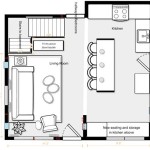Essential Aspects of House Floor Plans Blueprints
House floor plans are essential blueprints that provide a detailed layout of your future home. They serve as the foundation for all subsequent construction and design decisions, ensuring that your dream home meets your specific needs and preferences. Understanding the various aspects of these blueprints is crucial for making informed decisions throughout the building process.
1. Scale and Dimensions
Floor plans depict the accurate size and proportions of your home using scale drawings. They indicate the length, width, and height of each room and feature, allowing you to visualize the flow and overall layout of your space.
2. Room Layout
Blueprint floor plans clearly show the placement and arrangement of rooms within the house. They delineate the location of bedrooms, bathrooms, kitchens, living areas, and other functional spaces.
3. Wall Types and Openings
The plans distinguish between different types of walls, such as exterior, interior, and load-bearing walls. They also indicate the location of windows, doors, arches, and other openings.
4. Electrical and Plumbing
Floor plans often include schematics for electrical and plumbing systems. These indicate the placement of outlets, switches, light fixtures, plumbing fixtures, and pipes.
5. Stairwells and Elevations
The blueprints show the location of staircases, elevators, and any changes in elevation within the home. This provides a comprehensive understanding of the vertical movement and accessibility of different levels.
6. Exterior Features
Some floor plans extend to include exterior features such as decks, patios, porches, and garages. These elements provide insights into the outdoor living spaces and overall curb appeal of your home.
7. Legend and Symbols
Floor plans utilize a legend or key to explain the meaning of various symbols and notations used throughout the blueprints. This helps you interpret the plan and understand the specific details indicated.
8. Revisions and Updates
As the design and construction process evolves, it is common for floor plans to undergo revisions and updates. These modifications are documented on the blueprints, ensuring that the plans accurately reflect the latest design changes.
9. Importance of Professional Design
It is highly recommended to engage a licensed architect or designer to create your floor plans. Professionals possess the expertise to ensure that your plans meet building codes, address structural requirements, and optimize space utilization.
Conclusion
House floor plans provide a visual guide to the design and layout of your future home. They are essential for visualizing the flow, functionality, and aesthetics of your living space. By thoroughly understanding the various aspects of blueprints, you can make informed decisions and ensure that your dream home meets your specific needs and aspirations.

Floor Plans Types Symbols Examples

House Plans How To Design Your Home Plan

Floor Plans Types Symbols Examples

Home Plan Buyers Learn How To Read A Floor Blueprint Blog Eplans Com

Floor Plans Types Symbols Examples

Where You Can Buy House Plans Live Home 3d

Small House Design Shd 2024007 Pinoy Eplans One Y Bungalow Plans Layout

Home Plan Buyers Learn How To Read A Floor Blueprint Blog Eplans Com

Tips For Selecting The Right Floor Plan Your Home Sater Design Collection

How To Read A Floor Plan With Dimensions Houseplans Blog Com








